Last updated on December 29, 2023
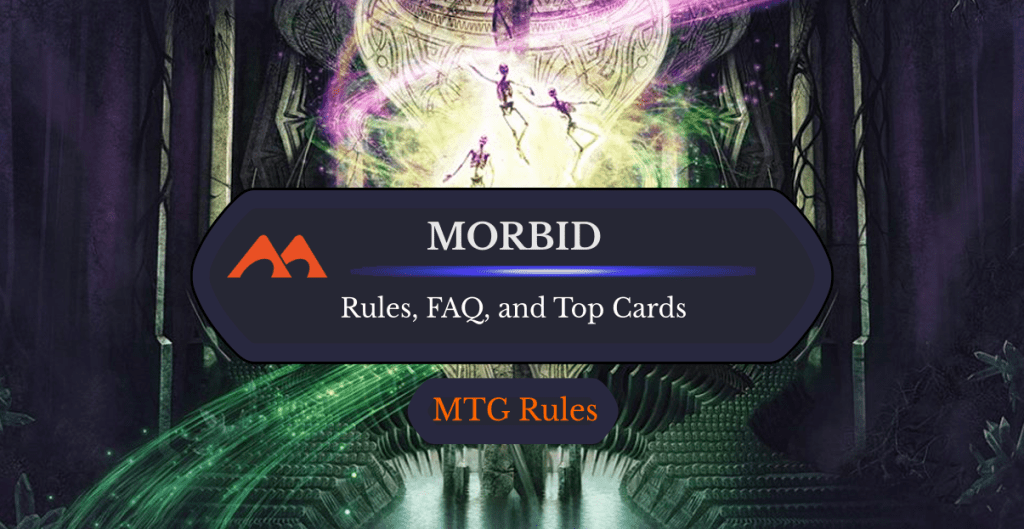
Deathreap Ritual | Illustration by Steve Argyle
In revisiting the huge success that was the original Innistrad block, there’s no way we’re not talking about one of the key mechanics: morbid. It’s such a flavor win in a set that’s mainly about horror. Is anyone ever safe?
Sometimes you’ll kill or block your opponent’s creature and be punished with a big morbid creature coming your way, or you won't be sure if you should attack into them because morbid will punish you (or it’s the other way around, you’re using that to your advantage).
Golgari () decks have as such an element of fear and surprise, so what better than to take advantage of creature deaths? Today I'm talking rules interaction, best cards, and a fun EDH deck to use your morbid cards. Let’s go!
How Does Morbid Work?
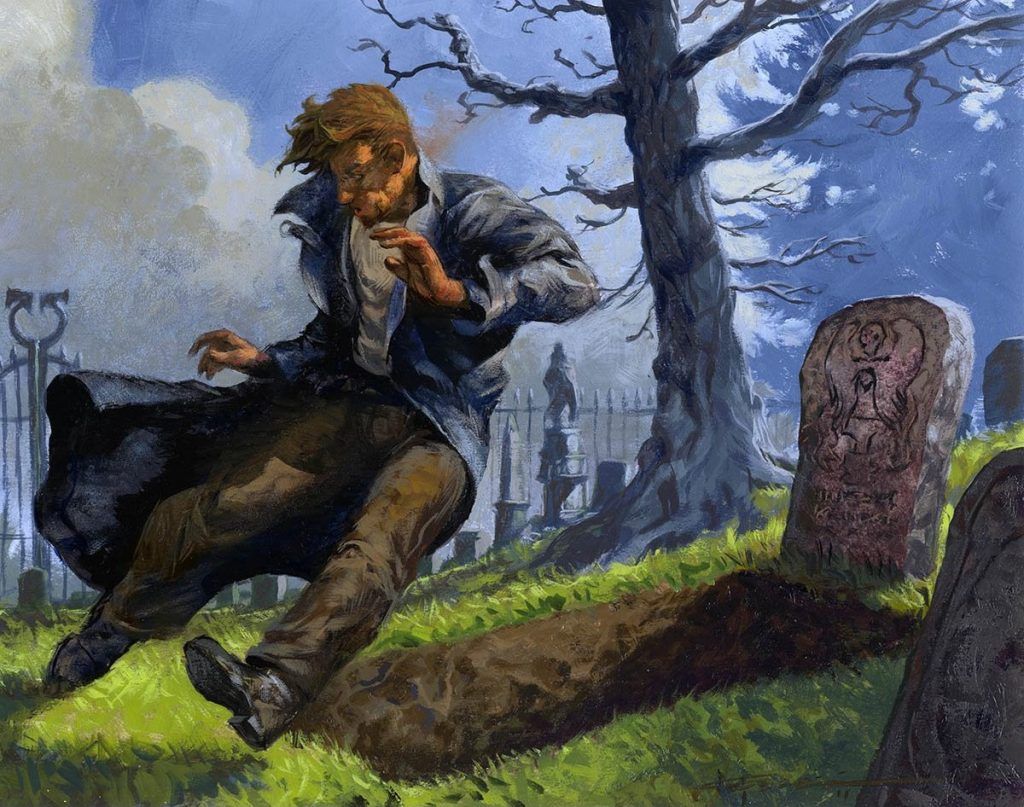
Tragic Slip | Illustration by Christopher Moeller
Morbid is a state-based action that triggers if a creature dies during a given turn. It doesn’t matter who controls the creature or who’s turn it is. This can happen in a combat situation, by creature death via combat, removal spells, or sacrifice effects.
Morbid-heavy decks usually have many ways for this to happen, including sacrifice outlets and black “kill spells.” So why is it any good? Morbid creatures and spells are extra powerful if the death trigger is activated. More specifically, you want to cast the morbid spells after a creature dies to reap the benefits.
For example, Tragic Slip gives a creature -13/-13 instead of -1/-1, while Festerhide Boar enters the battlefield with two extra +1/+1 counters to make it a formidable 5/5. There’s a subset of morbid cards like Deathreap Ritual and Reaper from the Abyss that care about morbid once per turn.
Morbid is found on creatures, instants, sorceries, and enchantments, but there could be future designs of artifacts, lands, and planeswalkers with the mechanic.
The History of Morbid in MTG
Morbid debuted in the original Innistrad set in 2011. The mechanic was centered in green/black, the two colors that care about life, the graveyard, and related stuff, with a red Brimstone Volley to boot.
Morbid returned several times in sets like Dark Ascension, Commander 2014, and Modern Horizons. There’s also “pseudo-morbid,” cards that care if a creature died but without the mechanic keyword. Cards like Bone Picker from Amonkhet and Bulette from Forgotten Realms are examples. As a matter of fact, the green/black morbid theme has been in a few sets (M21, AFR), but without using the morbid mechanic per se.
If we consider pseudo-morbid, the first card with the mechanic was Osai Vultures, a white creature from Legends. Morbid and pseudo-morbid are never a downside, but it has already appeared as a restrictive way of casting a spell (Grim Wanderer can be only cast if a creature died this turn).
What if the Creature that Died Is Removed from the Graveyard?
If the creature dies and goes to the graveyard, morbid triggers regardless of whether it’s removed from there. You can exile the creature from the graveyard or bring it back to your hand, library, or battlefield, but the morbid trigger only cares about a creature hitting the graveyard.
Morbid can be negated if an effect prevents the creature from going to the graveyard. For example, Anafenza, the Foremost that says that if a creature would die, exile it instead. This Anafenza doesn’t allow morbid to trigger because the exile effect overrides the death effect. It also negates creatures that have death triggers, like “when (card) dies, draw a card and lose one life.”
How Does Morbid Work with Token Creatures?
Morbid doesn’t care if the creature that died is a token creature or a nontoken creature. This helps decks with token producers abuse the morbid mechanic easier by sacrificing tokens instead of creatures.
How Do Activated Morbid Abilities Work?
The activation of the ability is tied to a morbid trigger or condition. For example, you can only activate Skirsdag High Priest’s ability after a creature dies, as awesome as creating 5/5 Demon tokens is.
How Do Triggered Morbid Abilities Work?
Triggered morbid abilities perform a check to see if a creature died this turn before actually triggering. Reaper from the Abyss reaps a creature at the end step if a creature as died, while Deathreap Ritual draws you a card. Hollowhenge Scavenger has its morbid ability stapled to an ETB trigger.
Does Morbid Work Twice with Commanders Like Teysa Karlov?

Teysa Karlov doubles the death triggers from a permanent, but the morbid mechanic doesn’t care how many creatures died, it just checks if a creature has died or not. Teysa Karlov won’t double the morbid trigger. You can only double some the effects, like drawing a card or dealing damage, with other means.
Gallery and List of Morbid Cards
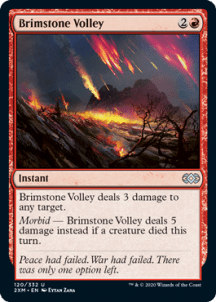
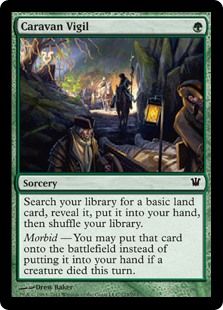
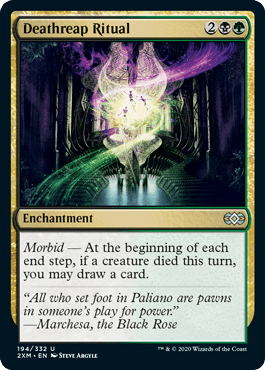
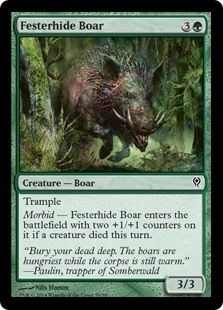
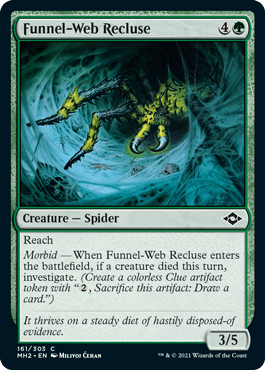
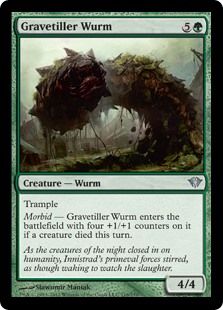
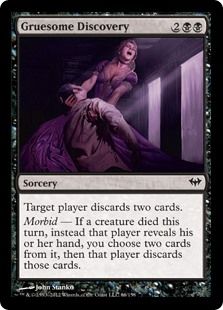
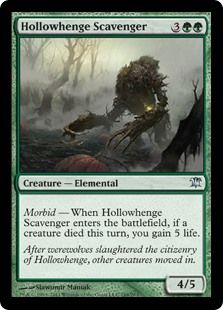
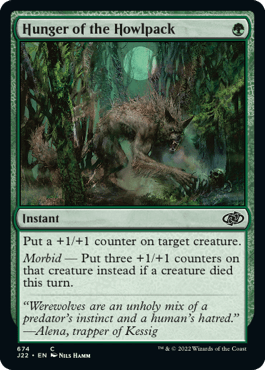
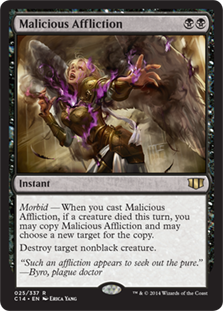
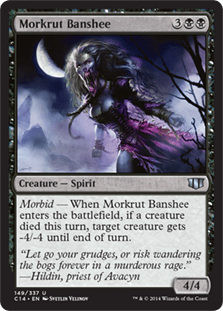
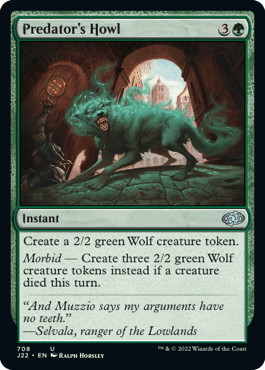
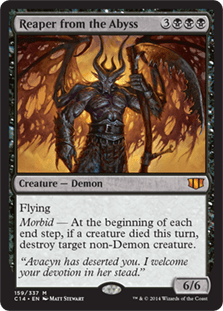
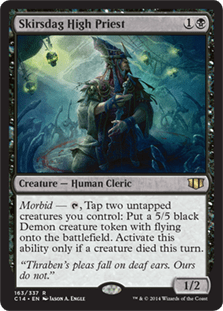
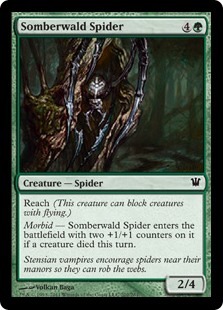
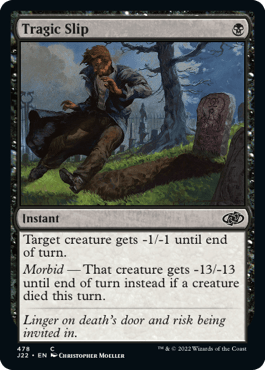
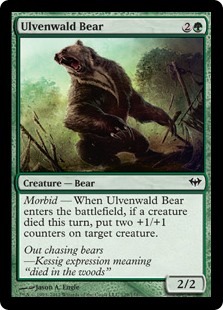
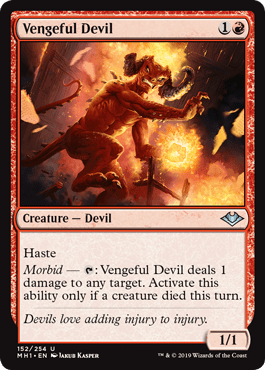
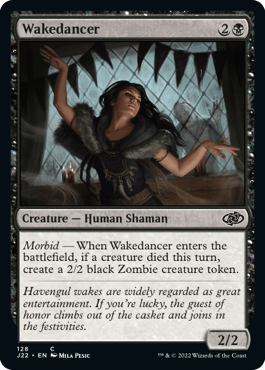
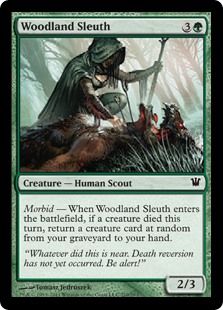
- Brimstone Volley
- Caravan Vigil
- Deathreap Ritual
- Festerhide Boar
- Funnel-Web Recluse
- Gravetiller Wurm
- Gruesome Discovery
- Hollowhenge Scavenger
- Hunger of the Howlpack
- Malicious Affliction
- Morkrut Banshee
- Predator's Howl
- Reaper from the Abyss
- Skirsdag High Priest
- Somberwald Spider
- Tragic Slip
- Ulvenwald Bear
- Vengeful Devil
- Wakedancer
- Woodland Sleuth
Best Morbid Cards
#6. Predator's Howl

Like Tragic Slip, the difference between paying four mana for a token and three tokens is huge. Play Predator's Howl if you can reliably trigger morbid.
#5. Skirsdag High Priest
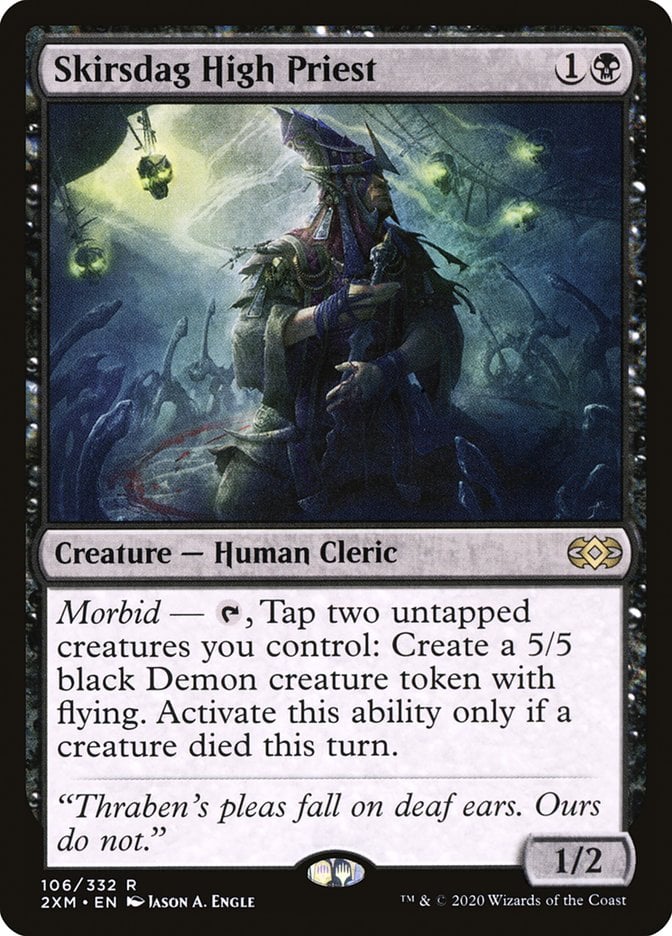
Skirsdag High Priest‘s ability is awesome, but you have to jump through extra hoops to activate it. It’s probably best used in EDH, where you can have a black-based deck or commander that already produces tokens to tap and sacrifice outlets.
Sacrificing a creature and using Skirsdag High Priest at the end of turn to make a free 5/5 flier is very nice.
#4. Tragic Slip
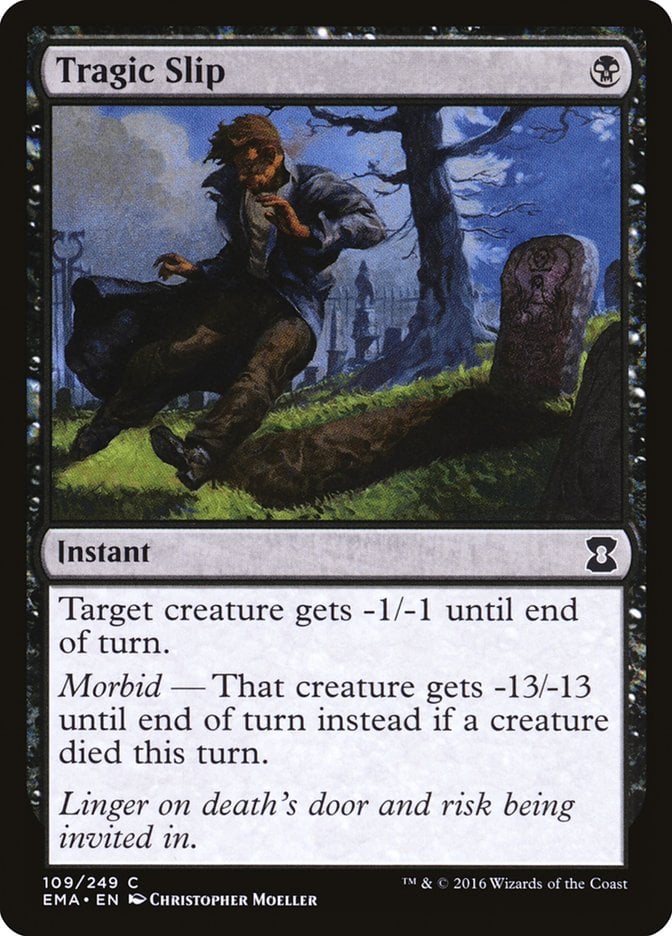
The gap between -1/-1 and -13/-13 is huge, so morbid plays a huge part in Tragic Slip’s effectiveness. Definitely play this if you're playing EDH sacrifice-based decks since it gets around indestructible.
There was a time that Tragic Slip was played in Modern before Fatal Push was printed. It thrived on the abundance of X/1s like Noble Hierarch, Birds of Paradise, and Dark Confidant in the meta.
#3. Malicious Affliction

Malicious Affliction is a Doom Blade that can be two with extra steps. It's just a regular Doom Blade without morbid, but it's a two-for-one with it.
#2. Deathreap Ritual
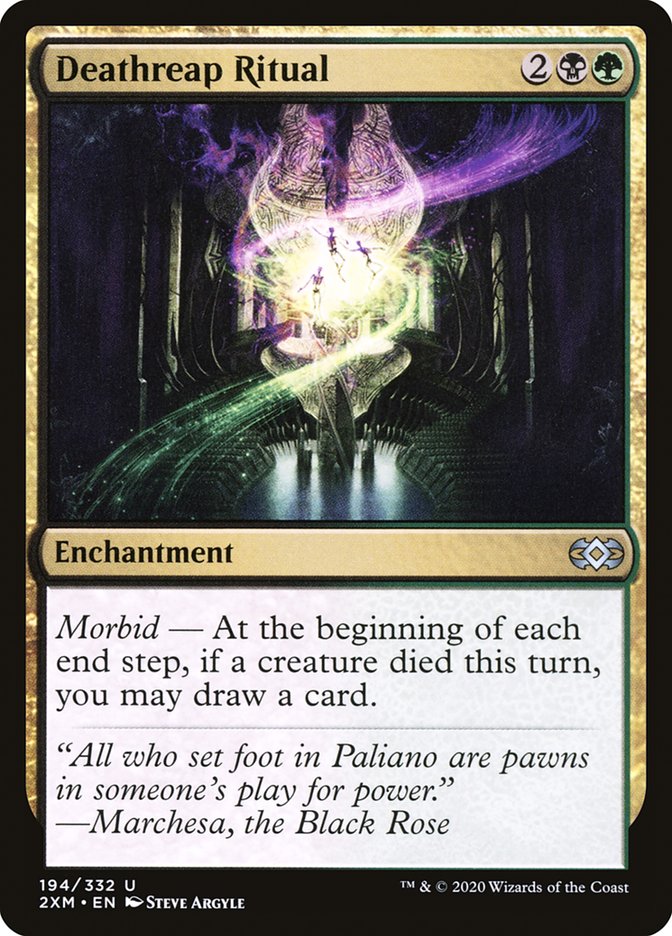
Deathreap Ritual gives you an extra card every turn in sacrifice-based Golgari decks. It works if you kill the opponent’s creatures using your removal spells, or with edict effects.
#1. Reaper from the Abyss
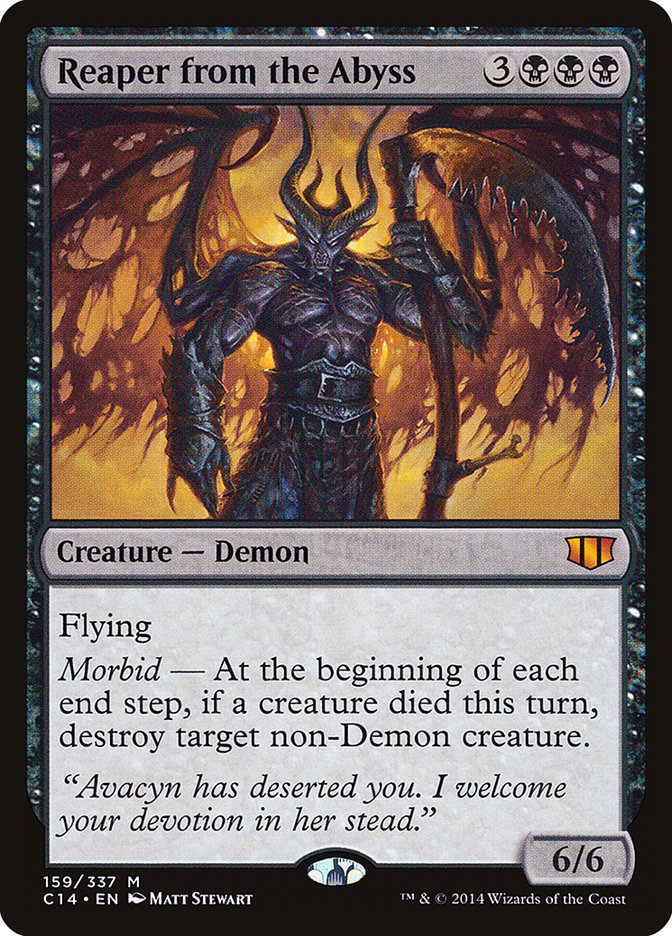
Reaper from the Abyss is one of the few demons without any downside or life payment effects. Its morbid ability is just an added benefit. If you attack with it and it’s blocked, you’ll destroy an extra creature.
This has nice implications in EDH because it triggers morbid on each end step.
Decklist: Dina Morbid in Commander
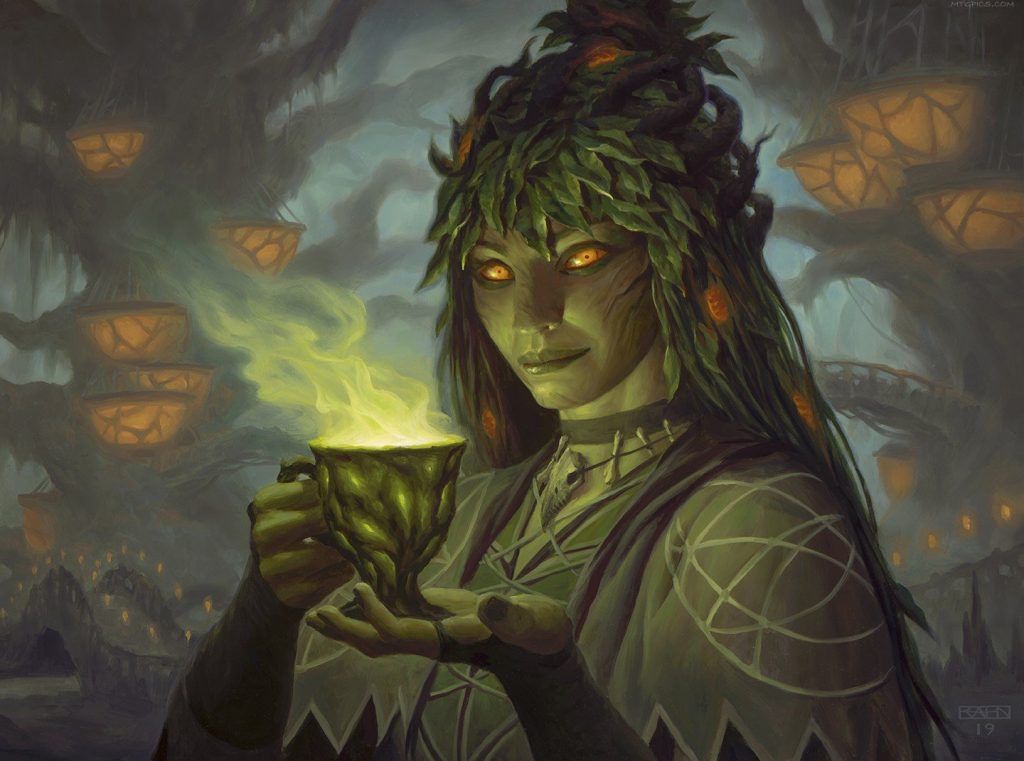
Dina, Soul Steeper (Strixhaven: School of Mages) | Illustration by Chris Rahn
Commander (1)
Creatures (33)
Deathgreeter
Essence Warden
Viscera Seer
Blood Artist
Nether Traitor
Prosperous Innkeeper
Sakura-Tribe Elder
Zulaport Cutthroat
Chatterfang, Squirrel General
Dross Harvester
Liliana's Standard Bearer
Marauding Blight-Priest
Midnight Reaper
Morbid Opportunist
Nadier's Nightblade
Ophiomancer
Pawn of Ulamog
Scute Swarm
Sedgemoor Witch
Veinwitch Coven
Meren of Clan Nel Toth
Pitiless Plunderer
Prowling Geistcatcher
Smothering Abomination
Vindictive Vampire
Yawgmoth, Thran Physician
Death Tyrant
Mitotic Slime
Phyrexian Delver
Tendershoot Dryad
Protean Hulk
Haywire Mite
Drivnod, Carnage Dominus
Instants (11)
Tragic Slip
Village Rites
Golgari Charm
Infernal Grasp
Plumb the Forbidden
Beast Within
Chord of Calling
Baleful Mastery
Lethal Scheme
Mortality Spear
Culling the Weak
Sorceries (9)
Bone Shards
Eaten Alive
Pest Infestation
Bala Ged Recovery
Cultivate
Kodama's Reach
Primal Growth
Victimize
Skyshroud Claim
Enchantments (6)
Bastion of Remembrance
Blight Mound
Dark Prophecy
Fecundity
Pattern of Rebirth
Moldervine Reclamation
Artifacts (6)
Skullclamp
Sol Ring
Lightning Greaves
Ashnod's Altar
Phyrexian Altar
Bolas's Citadel
Lands (34)
Blooming Marsh
Castle Garenbrig
Command Tower
Deathcap Glade
Fabled Passage
Forest x8
Jungle Hollow
Khalni Garden
Llanowar Wastes
Necroblossom Snarl
Overgrown Tomb
Phyrexian Tower
Riveteers Overlook
Swamp x8
Tainted Wood
Temple of Malady
Temple of the False God
Undergrowth Stadium
Woodland Cemetery
Woodland Chasm
Dina is a commander that’s also a sacrifice outlet. A Dina, Soul Steeper deck usually revolves around gaining life and using the lifegain to damage opponents. You can take advantage of Dina’s cheap sacrifice outlet to include a few morbid cards, and there’s a few in this list. Other useful cards act like morbid, like Morbid Opportunist, or care about death triggers.
The deck is a bunch of sacrifice outlets, cards that make tokens/disposable creatures, and cards that care about other creatures dying. You also want cards like Mitotic Slime where you get a huge benefit when they die. Here are just a few examples:
Sacrifice Outlets
Tokens Generators
Cards That Care About Creatures Dying
- Tragic Slip
- Moldervine Reclamation
- Morbid Opportunist
- Deathgreeter
- Blood Artist
- Meren of Clan Nel Toth
Wrap Up

Brimstone Volley | Illustration by Eytan Zana
Caring about creatures dying is a fun way to convey horror in gameplay and keep opponents and players guessing. The sentence “if a creature died this turn” is easy to include in a lot of designs, radically changing the effect.
Morbid is bound to return since WotC deals with keywords in a different way now, if only something in the vein of Morbid Opportunist and Ghoulish Procession. The rules are different in Commander, Masters, or Horizons sets, where they’re more inclined to use keywords on a card or two.
What are your experiences with morbid? Do you think it’s a fun or lame mechanic? Let me know in the comments below or in the Draftsim Discord.
Stay safe, and thanks for reading!
Follow Draftsim for awesome articles and set updates: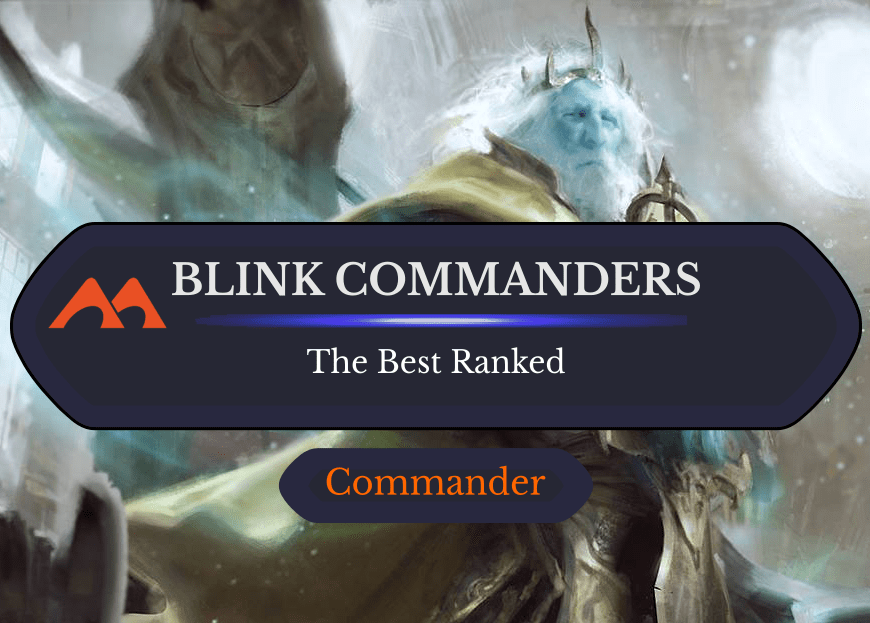
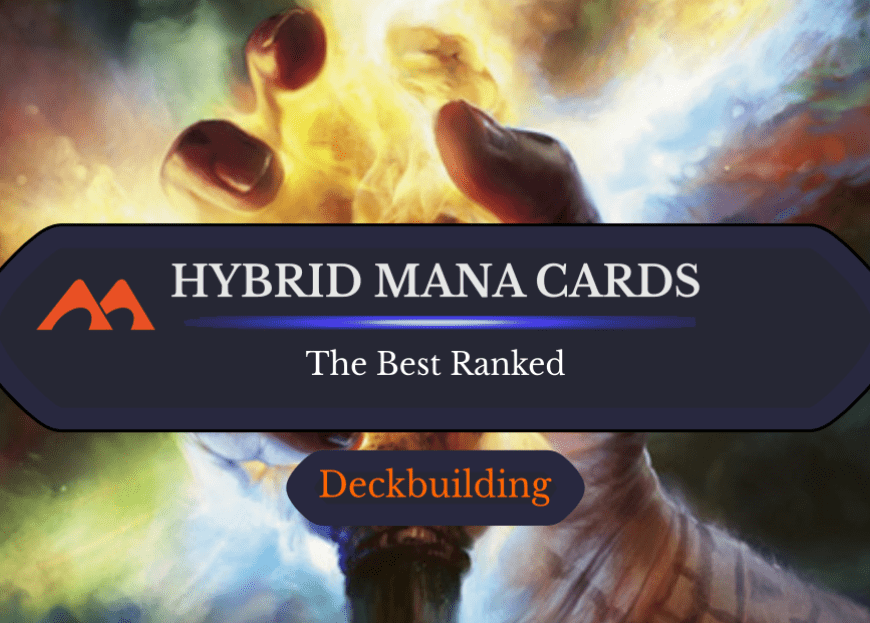
Add Comment